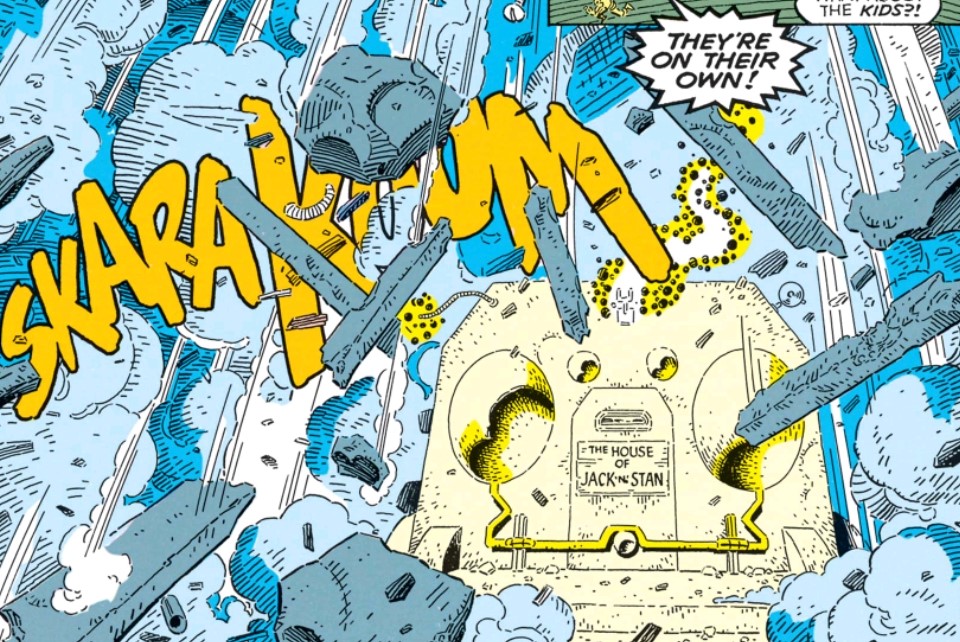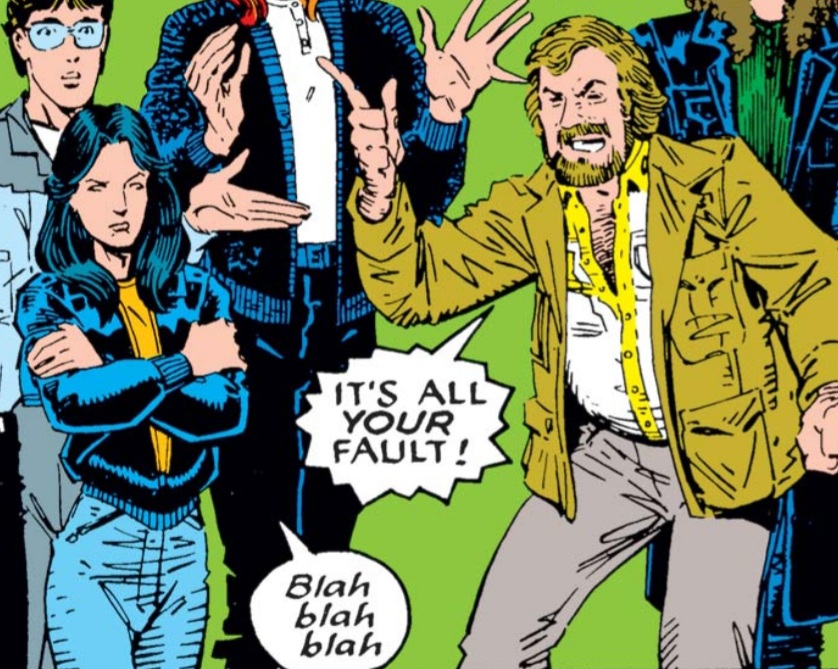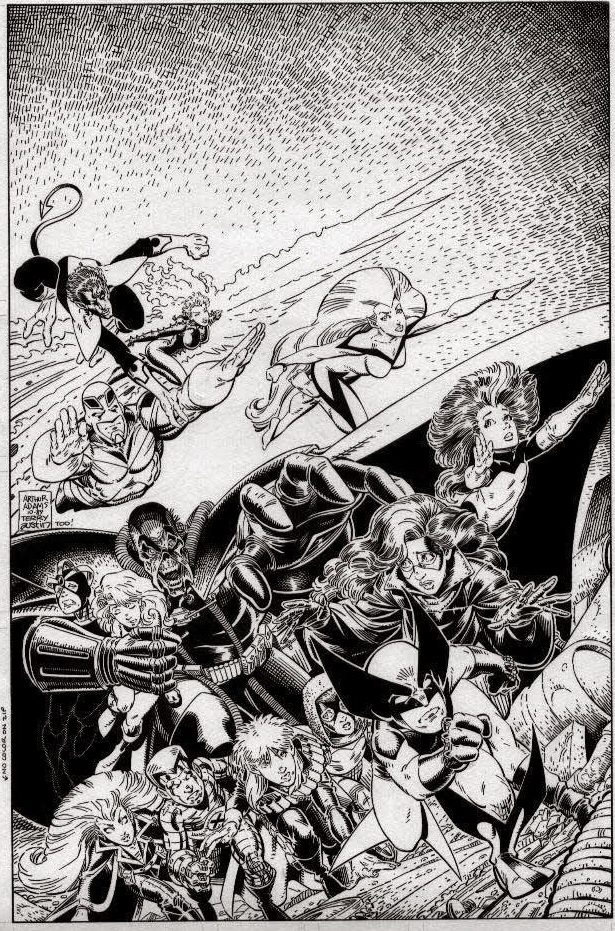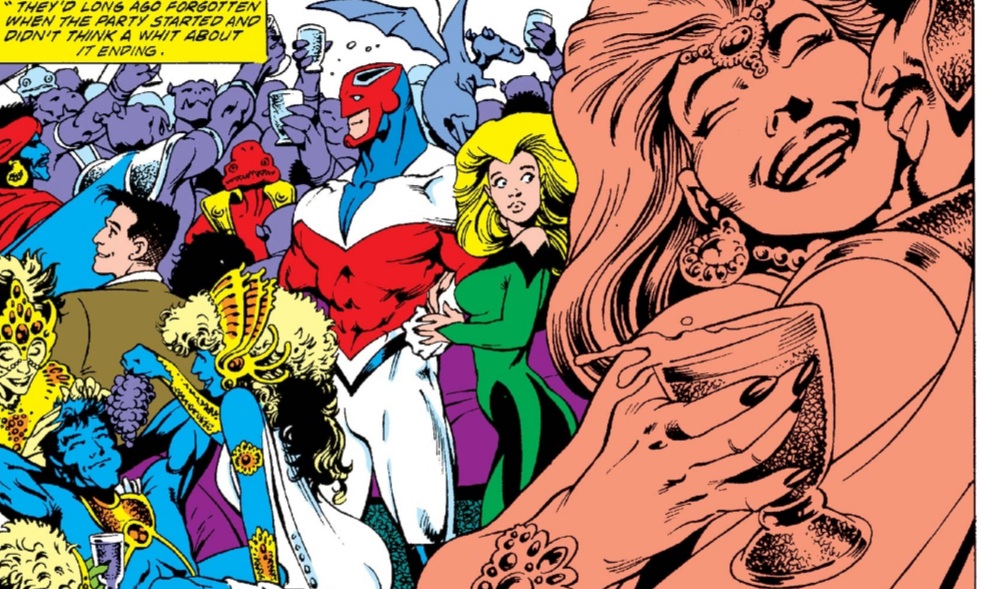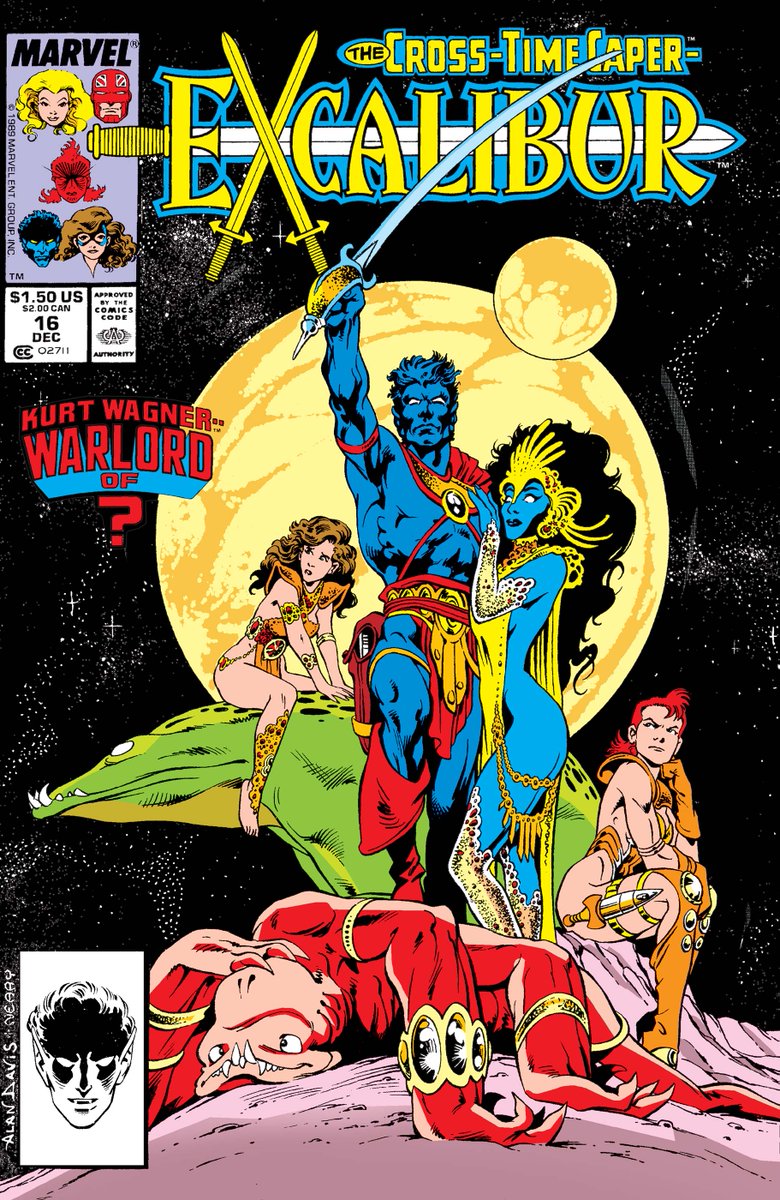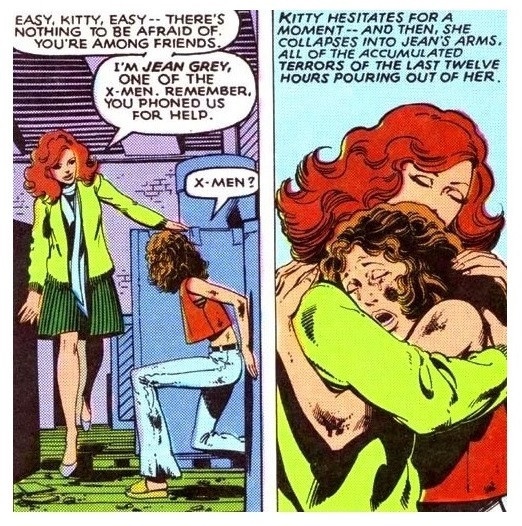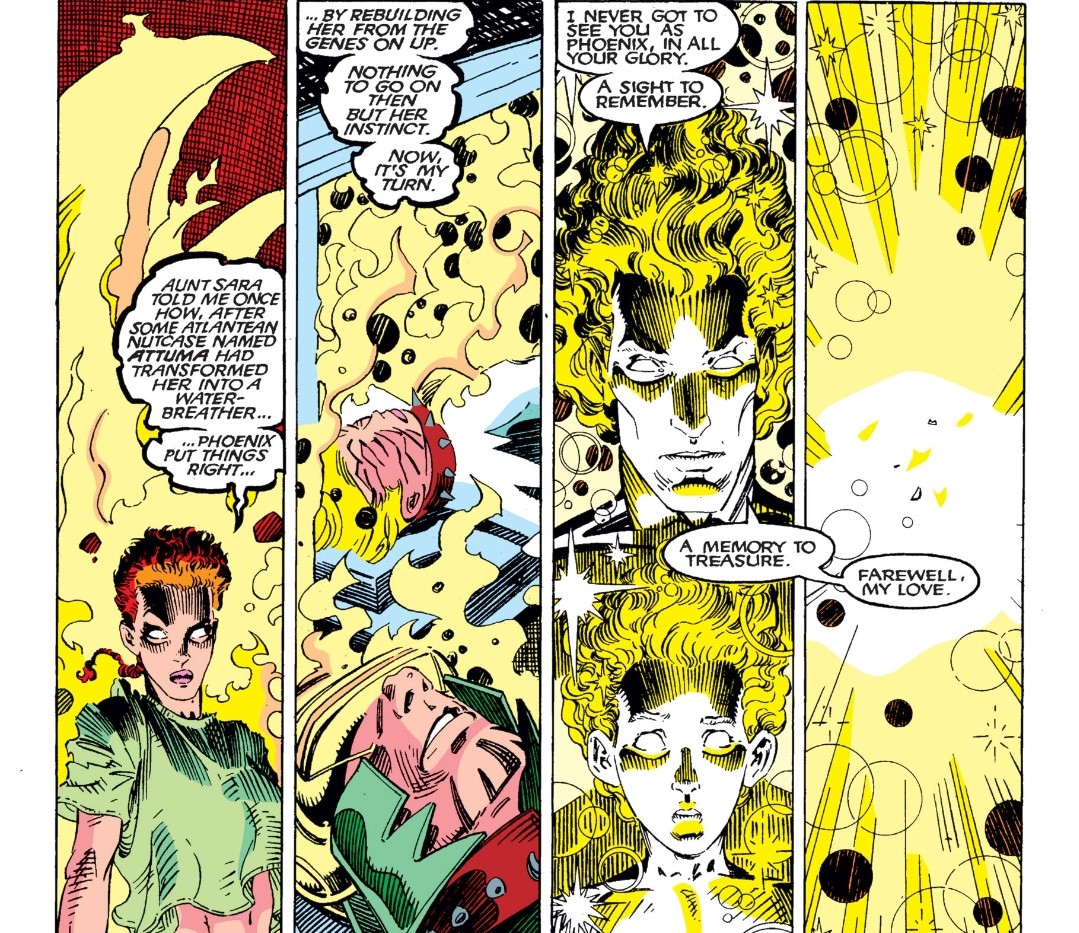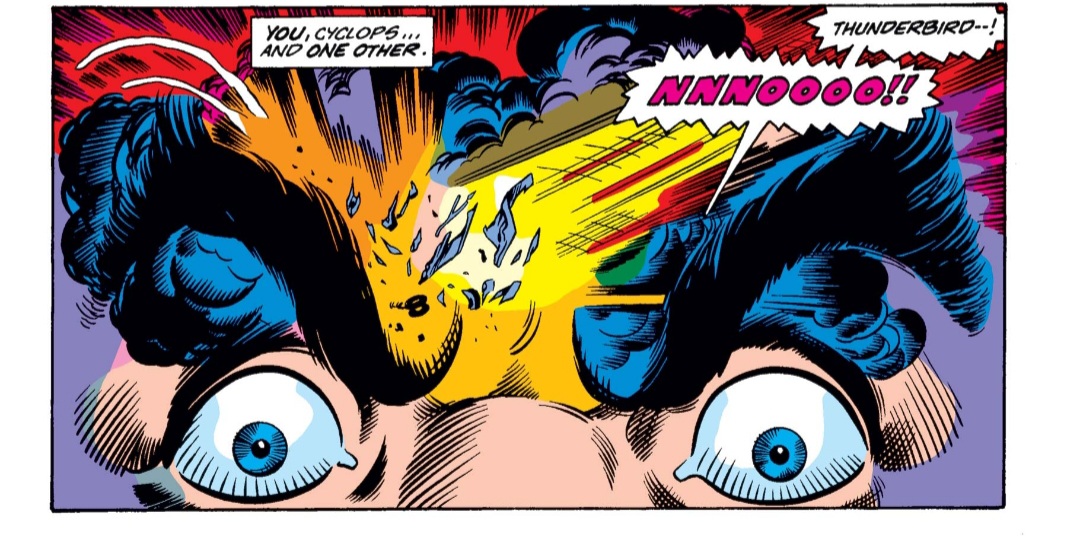
Hank McCoy’s presence in the Dark Phoenix Saga provides a nice continuation of that character’s development, ultimately accelerating his difficult transition to the Avengers, in part, by having him here witness the true end of the original X-Men. #xmen #darkphoenix 1/5 

Hank reflects on his isolation within the Avengers and his longing for the found-family of the X-Men, just as the call for help comes in. Torn between allegiances, he ponders his obligation and chooses the X-Men. 2/5 

Hank’s dalliance with nostalgia ends about as badly as it could, however, allowing him to witness the death of a woman he loved, the emotional devastation of his friend and former leader, and the darkest hour of the X-Men at large. 3/5 

In all of this, Hank (and Angel) connects readers to the previous generation of X-Men, to the depth of stories and experiences that they share, while also communicating, as the death of Jean makes immediately clear, that the past is gone. 4/5 

Thus, the seemingly unnecessary incorporation of Hank carries important symbolic weight, expanding the timeline of Jean’s backstory/life, and thus extending the tragedy of her passing. It isn’t just Jean who dies on the moon, it’s the original X-Men as a whole. 5/5 

• • •
Missing some Tweet in this thread? You can try to
force a refresh








